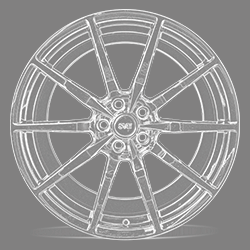I have a 2010 GT, same as the OP. The 1st thing you do with a 2010/11/12 GT is toss the upper grille..and replace it with a 7 bar grille. The oem upper grille is 80% blocked off. With the 7 bar grille installed, it also eliminates the 2 x 90 deg bends into the 'snorkel' that in turn feeds the oem air box. Ok, now you have way more air going through the upper grille. The only downside to the 7 bar grille is.... it also deletes the oem upper fog lamps. My 2010 came with a 190 deg F T-stat. In my case, I have a small roush blower and also a B+M ( bar + plate type) auto tranny cooler.... plumbed in series with oem auto tranny cooler..and below it. I also have a 18" tall x 21" wide roush HE...right out in front of everything. I need all the air I can get.
In normal operation, in in 40 C ( 104 F) outside temps, like this recent heat dome event we had here in southern BC, the temp gauge on the dash is always to the left of vertical.
Idling, in the driveway.... coolant temps will rise to 206 F..then the low speed fan kicks in..and coolant temps drop down to 196 F...and low speed fan shuts OFF. Temp again rises to 206 F, low speed fan kicks in..and the cycle just repeats itself. On the road, even at 50 kph ( 30 mph)..the low speed fan is not on.
( high speed fan is set to kick in at aprx 213 F). Low speed fan not on, out on the hwy either.
In my case the 7 bar upper grille mod has worked out really good for the last 10 years...and looks a lot better. The actual measured velocity of the oem fan in both low and also high speed is not great at all. It's a lot of cfm, but the actual velocity is miniscule, like 20-25 mph.
Both the upper and lower grille openings on a 2010 is not very much.
In normal operation, in in 40 C ( 104 F) outside temps, like this recent heat dome event we had here in southern BC, the temp gauge on the dash is always to the left of vertical.
Idling, in the driveway.... coolant temps will rise to 206 F..then the low speed fan kicks in..and coolant temps drop down to 196 F...and low speed fan shuts OFF. Temp again rises to 206 F, low speed fan kicks in..and the cycle just repeats itself. On the road, even at 50 kph ( 30 mph)..the low speed fan is not on.
( high speed fan is set to kick in at aprx 213 F). Low speed fan not on, out on the hwy either.
In my case the 7 bar upper grille mod has worked out really good for the last 10 years...and looks a lot better. The actual measured velocity of the oem fan in both low and also high speed is not great at all. It's a lot of cfm, but the actual velocity is miniscule, like 20-25 mph.
Both the upper and lower grille openings on a 2010 is not very much.



